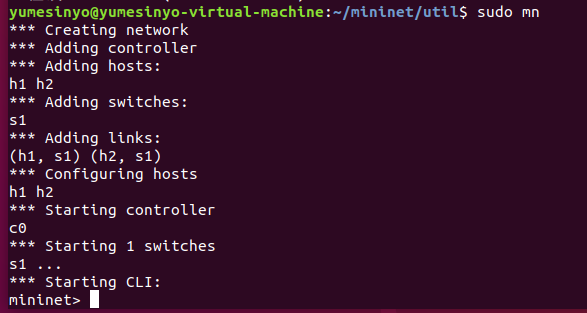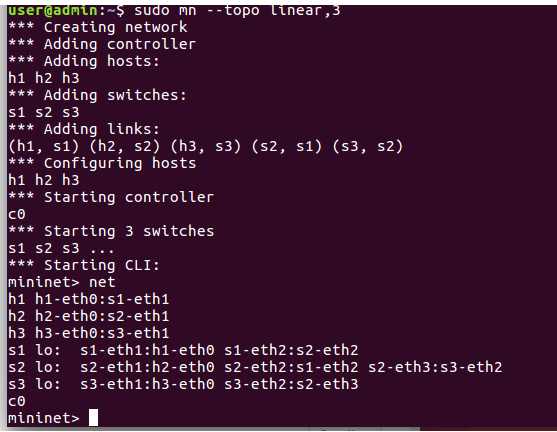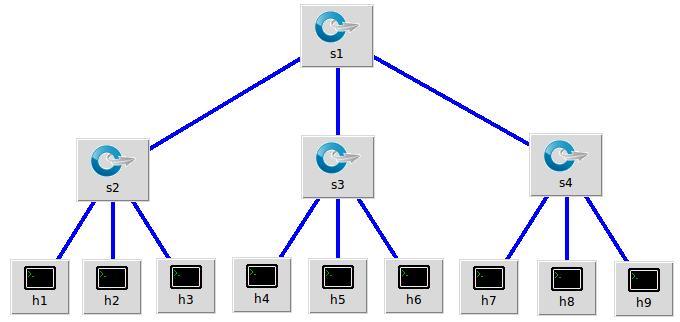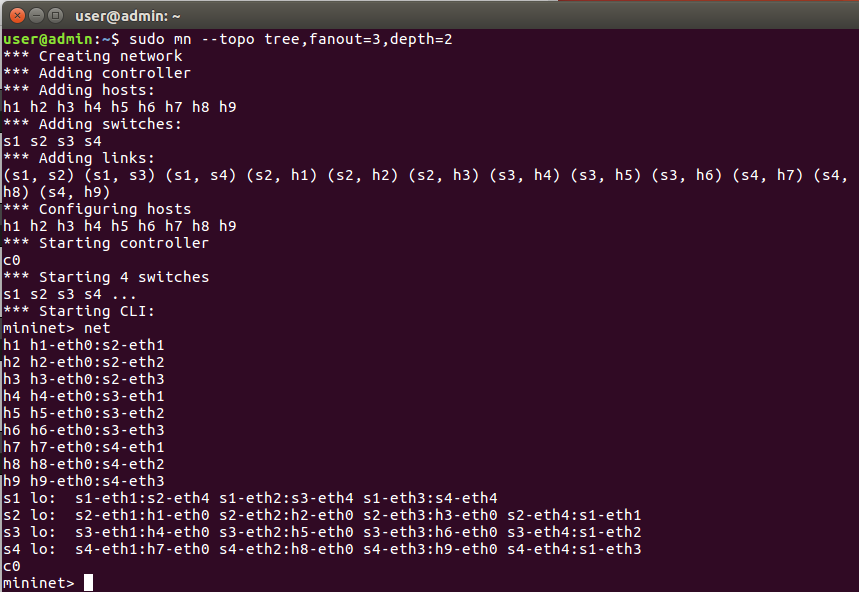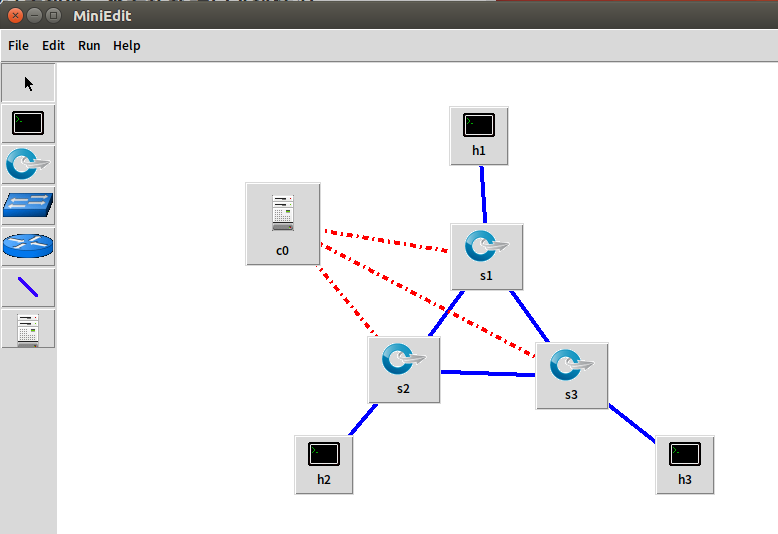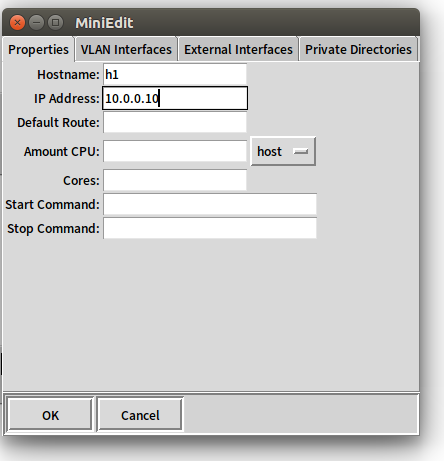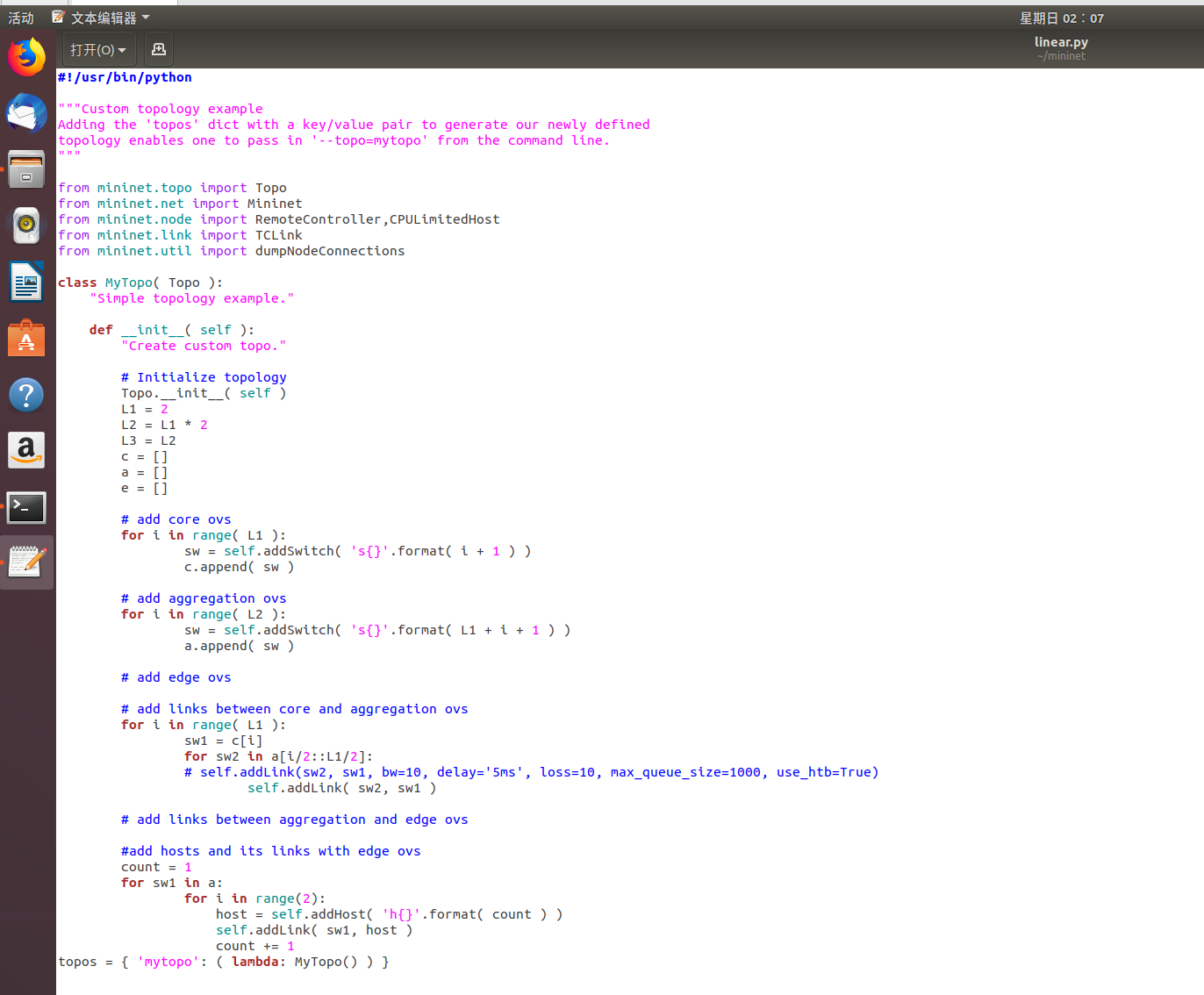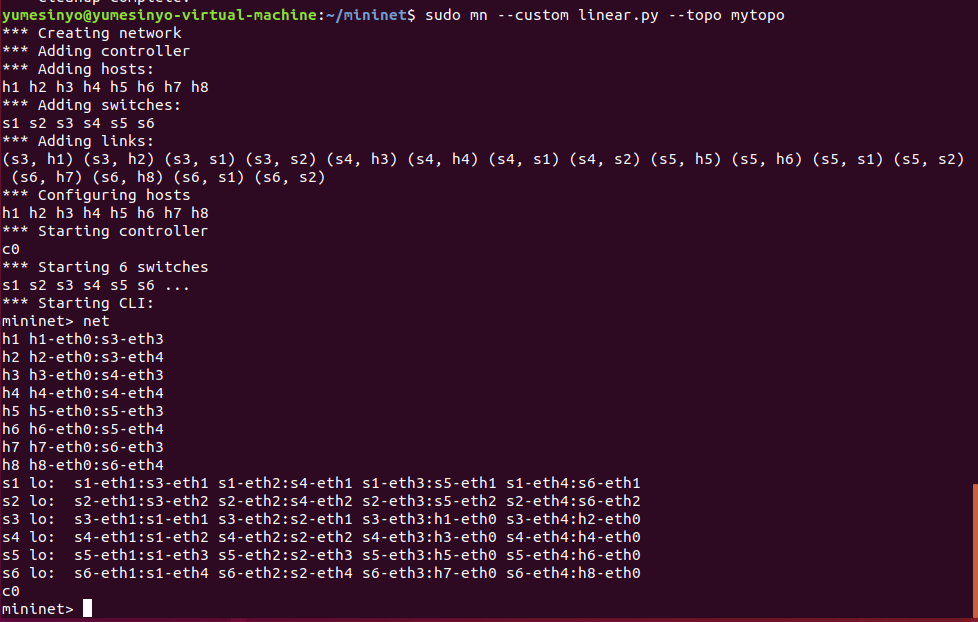作业说明
本次实验步骤2、3是在机房环境下完成的,步骤1、4是在自己笔记本上重新配置完成的,所以环境、用户名什么的会略有差别。
1. 安装轻量级网络仿真工具Mininet
为了节约课程时间,实验室机房PC已经安装了Mininet,请大家在课后在自己的Ubuntu系统或虚拟机中尝试安装,并记录安装步骤。
我所采用的是依照给定的github上mininet源安装,在自己的新建虚拟机下进行安装。
一、安装git
sudo apt install git

二、安装mininet
git clone http://github.com/mininet/mininet.git
cd mininet/util
./install.sh -a

三、测试mininet
sudo mn

不知道为什么出错了,这边使用ubuntu源內安装解决
sudo apt-get install mininet

sudo mn

2. 用字符命令搭建如下拓扑,要求写出命令
第一个拓扑是三台主机分别连接交换机,然后三台交换机连接在一起,是一个线性结构。

sudo mn --topo linear,3

第二个拓扑是一个交换机连接三个交换机,每台交换机连接三个主机,是一个深度2、宽度3的树形结构。

sudo mn --topo tree,fanout=3,depth=2

3. 利用可视化工具搭建如下拓扑,并要求支持OpenFlow 1.0 1.1 1.2 1.3,设置h1(10.0.0.10)、h2(10.0.0.11)、h3(10.0.0.12),拓扑搭建完成后使用命令验证主机ip,查看拓扑端口连接情况。

通过终端打开miniedit,将图示拓扑画上。
(小插曲:一直找不到控制器与交换机之间的虚线在哪里,所以愣神了很久,其实就是左侧的蓝色线,如果能够不想那么多,直接上手的话应该能够更早发现,节省一定的时间。这就告诉我们:犹豫就会败北)

通过部件的Properties属性设置主机的IP地址。



通过edit栏下的Preferences设置交换机支持的OpenFlow协议版本。

使用命令验证主机IP。
xterm h1 h2 h3

4. 利用Python脚本完成如下图所示的一个Fat-tree型的拓扑(交换机和主机名需与图中一致,即s1~s6,h1~h8,并且链路正确,请给出Mininet相关截图)

使用文本编辑器编辑linear.py文件

在文件对应位置下建立拓扑
sudo mn --custom linear.py --topo mytopo

具体代码如下:
"""Custom topology example
Adding the 'topos' dict with a key/value pair to generate our newly defined
topology enables one to pass in '--topo=mytopo' from the command line.
"""
from mininet.topo import Topo
from mininet.net import Mininet
from mininet.node import RemoteController,CPULimitedHost
from mininet.link import TCLink
from mininet.util import dumpNodeConnections
class MyTopo( Topo ):
"Simple topology example."
def __init__( self ):
"Create custom topo."
# Initialize topology
Topo.__init__( self )
L1 = 2
L2 = L1 * 2
L3 = L2
c = []
a = []
e = []
# add core ovs
for i in range( L1 ):
sw = self.addSwitch( 's{}'.format( i + 1 ) )
c.append( sw )
# add aggregation ovs
for i in range( L2 ):
sw = self.addSwitch( 's{}'.format( L1 + i + 1 ) )
a.append( sw )
# add edge ovs
# add links between core and aggregation ovs
for i in range( L1 ):
sw1 = c[i]
for sw2 in a[i/2::L1/2]:
# self.addLink(sw2, sw1, bw=10, delay='5ms', loss=10, max_queue_size=1000, use_htb=True)
self.addLink( sw2, sw1 )
# add links between aggregation and edge ovs
#add hosts and its links with edge ovs
count = 1
for sw1 in a:
for i in range(2):
host = self.addHost( 'h{}'.format( count ) )
self.addLink( sw1, host )
count += 1
topos = { 'mytopo': ( lambda: MyTopo() ) }




